#ticketing software for businesses
Explore tagged Tumblr posts
Text
Streamline Your Operations with One Call Ticket Management Software
Discover the power of efficient customer service with One Call Ticket Management Software from NorfieldDP. Our cutting-edge software provides businesses with a seamless solution for managing service requests, incidents, and tickets from start to finish. Whether you're in a fast-paced industry or need to enhance customer satisfaction, our one call ticket management software simplifies the process of handling multiple tickets, ensuring timely resolutions and boosting productivity.
By utilizing NorfieldDP's software, businesses can streamline communication between teams, prioritize tasks, and track the progress of each ticket. The user-friendly interface ensures that all details, including customer information and service requests, are easily accessible, helping you provide faster and more accurate responses. Our ticket management system not only increases efficiency but also delivers real-time updates, ensuring customers are informed every step of the way.
Embrace the future of ticket management with NorfieldDP and experience a world of smoother, faster customer service. From small enterprises to large corporations, our software adapts to your business needs and improves your overall customer experience.
#One call ticket management software#NorfieldDP#ticket management system#service request management#customer service software#efficient ticket management#business operations management#ticketing software for businesses#streamline customer service#incident management software
0 notes
Text
Glassix
Software Development Company
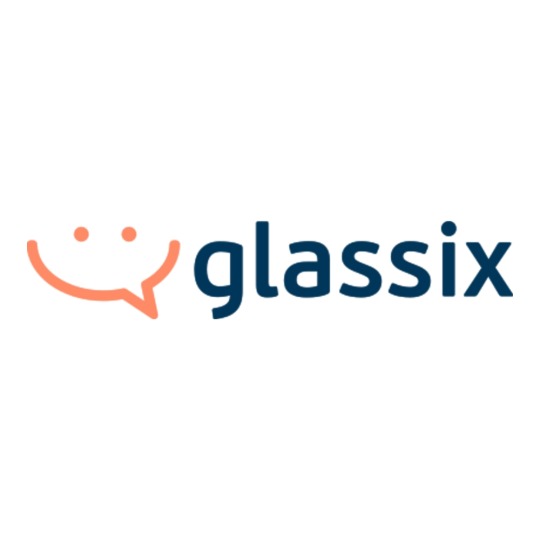
Glassix is a top-rated AI customer support and messaging platform, leveraging the advanced capabilities of conversational AI integrated with the GPT-4 engine. It’s designed to empower busy teams to excel in customer support and experience, featuring an AI-powered unified inbox that consolidates communications across all business channels and apps, including WhatsApp, Apple Messages for Business, social media, email, SMS, and more. Complementing this robust unified inbox, Glassix offers an intuitive drag-and-drop chatbot flow builder and templates, making it effortless to craft smart, efficient automation flows and deploy chatbots to any channel with just a single click. The platform's distinctiveness lies in its comprehensive AI suite and omnichannel features, providing users with innovative and modern tools such as auto-suggested replies, automatic tagging of conversations, one-click conversation summaries, and the capability to deploy generative AI chatbots. These features collectively ensure stellar customer support and experience, setting Glassix apart in the realm of customer engagement solutions.
Contact Details
Glassix
One Boston Place, Suite 2600, Boston, MA, USA 02108
Phone- +1 (617) 683-1236
Website- https://www.glassix.com/
Business Email- [email protected]
Business Hours- Mon - Thu: 9AM - 5PM.
Payment Methods- Credit/ Debit Card, PayPal, Apple Pay, Google Pay, Wire Transfer.
Owner Name- Guy Shalom.
Follow On:
Facebook- https://www.facebook.com/GlassixCompany
YouTube- https://www.youtube.com/@Glassix_CX
Instagram- https://www.instagram.com/glassix_cx/
TikTok- https://www.tiktok.com/@glassix.com
LinkedIn- https://www.linkedin.com/company/glassix
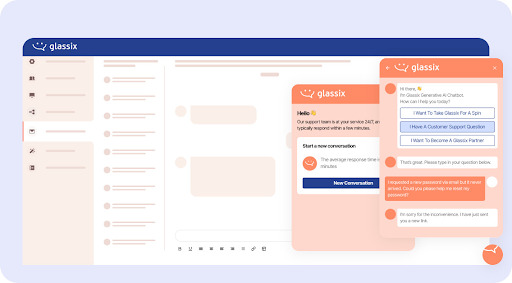
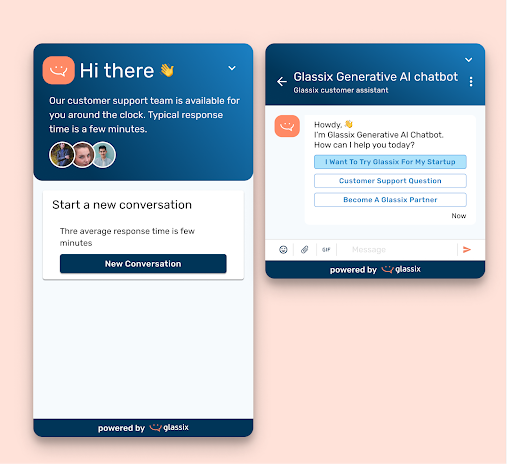
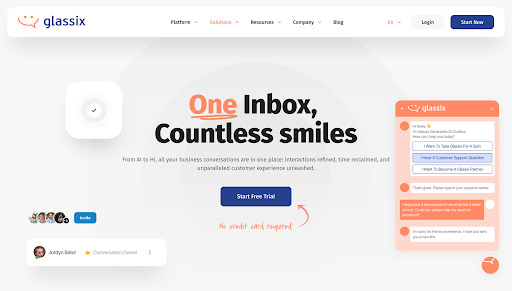
#Customer Support Software#Customer Service Software#Chatbot Platform#Ticketing System#Help Desk Software#WhatsApp Business Chatbot Solution#AI Chatbot tool#AI Customer Communications and Messaging Platform
2 notes
·
View notes
Text
All-in-One Web Based CRM for Tracking Sales Leads and Managing Tickets Efficiently
Managing customer relationships and keeping up with daily operations can be a real challenge for growing businesses. To stay ahead, teams need the right tools to manage support tickets, follow up with prospects, and maintain a steady workflow. That’s where Commence Corporation makes a difference.
Designed to simplify complex processes, Commence offers a smart solution that helps streamline customer service and sales operations. It brings together everything teams need in one place—making work easier, faster, and more efficient.
Smarter Support with Ticket Management
Providing quality support is essential for building long-term customer relationships. With Ticket Management Software from Commence, teams can easily organize and resolve customer issues. The system makes it simple to assign tasks, monitor progress, and ensure that every inquiry gets a timely response. This helps reduce bottlenecks and improves overall service quality.

Better Sales Performance Starts with Lead Tracking
Understanding where potential clients stand in the sales journey is key to closing deals. Commence’s solution for Tracking Sales Leads gives sales teams better visibility into their pipeline. With detailed insights and smart automation, it becomes easier to prioritize leads, follow up effectively, and boost conversions.

One Platform. Multiple Benefits.
Modern businesses need tools that are flexible, accessible, and scalable. That’s exactly what you get with Commence’s Web Based CRM. It’s built to support teams working remotely or in-office, giving them real-time access to essential customer and sales data from anywhere. Whether you're managing support tickets or tracking new business opportunities, everything is just a few clicks away.

From small startups to mid-sized companies, Commence offers a clean and reliable platform that adapts to business needs without unnecessary complexity.
Conclusion
For companies ready to improve how they manage customer interactions and grow their sales pipeline, Commence Corporation provides a complete and easy-to-use solution. With features designed for support, sales, and collaboration, it's more than just software—it’s a smarter way to run your business.
#Commence Corporation#Web Based CRM#Ticket Management Software#Tracking Sales Leads#CRM software#sales lead management#customer support tool#online CRM platform#business CRM system#lead tracking solution
1 note
·
View note
Text
Future-Ready Ticketing for a Smarter Experience
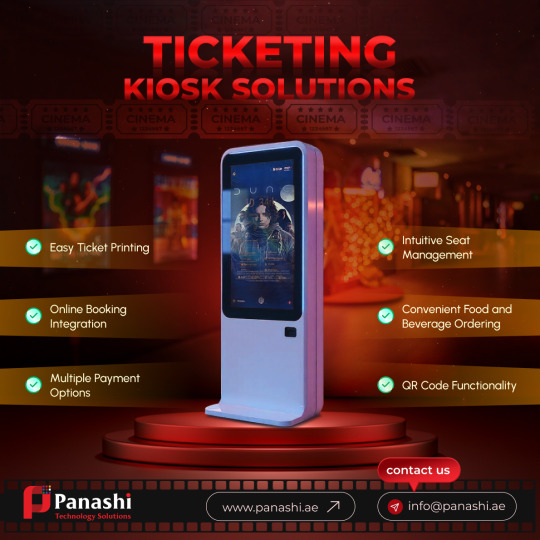
Step into the future of ticketing with our advanced self-service kiosk solution. Designed to streamline operations and enhance customer satisfaction, our kiosks offer fast, secure, and intuitive ticketing—anytime, anywhere. Whether you're managing transport, entertainment, or event venues, this smart system reduces wait times, minimizes manual errors, and delivers a seamless, contactless experience. Give your customers the convenience they expect—and your business the efficiency it needs.
#kiosk#selfservice#business#technology#tech#digital#machine#software#ticketing#ticketing kiosk#innovation#smartcities
1 note
·
View note
Text
CRMLeaf Features Built to Improve Sales and Customer Relationships

In this blog, we’ll explore the key features of CRMLeaf that are designed to elevate your sales process and enhance customer relationships at every stage.
Read the full blog
#CRMLeaf#Sales CRM#Business CRM#CRM software#Lead management#Customer engagement#Project management#HR software#Payroll system#Billing CRM#Task tracking#Team collaboration#Pipeline management#Ticketing system#Employee tracking#Recruitment tool#Data security#Reports & insights#Role-based access
1 note
·
View note
Text
Revolutionizing Cargo Handling with Self-Service Kiosk Machines !

In the fast-paced world of maritime logistics, efficiency is everything. Traditional cargo check-in and processing at ports often involve long queues, excessive paperwork, and time-consuming manual verifications. But with self-service kiosk machines, ports are stepping into a new era of automation and productivity. 🔹 Faster Cargo Processing – Self-service kiosks enable automated check-ins, reducing wait times and eliminating the need for manual paperwork. Cargo operators can quickly scan documents, input shipment details, and receive real-time status updates. 🔹 Improved Accuracy & Compliance – Human errors in cargo documentation can lead to delays and costly fines. Kiosks ensure compliance by cross-verifying data and generating digital records instantly, minimizing risks associated with incorrect filings. 🔹 24/7 Operations – Unlike manual check-in counters, self-service kiosks operate around the clock. This ensures smooth cargo movement even during non-peak hours, keeping supply chains active and efficient. 🔹 Enhanced Security – With integrated biometric authentication and RFID scanning, kiosks ensure secure access control, preventing unauthorized entries and enhancing overall port security. By reducing bottlenecks and improving workflow automation, self-service kiosks are transforming ports into smarter, more efficient hubs for global trade. As the maritime industry embraces digital transformation, kiosks are proving to be a game-changer in cargo handling.
#kiosk#self service#machine#software#business#marketing#technology#tech gadgets#kiosk machine#tech trends#future#ai#ticketing kiosk
0 notes
Text
youtube
Ticketing System | Issue Management Software
❌ Are unresolved customer issues slowing down your business? Lost tickets, delayed responses, and miscommunication can harm productivity and customer satisfaction.
✅ Hourglass IT’s Ticketing System provides a centralized, automated solution for seamless issue management. With features like real-time ticket tracking, automated assignments, priority-based resolutions, document uploads, and detailed reports, businesses can ensure faster problem-solving and improved workflow efficiency.
📈 Enhance your helpdesk, boost team collaboration, and deliver exceptional customer support—all in one platform!
📞 Contact us today for a FREE demo!
🔗 Learn more - https://www.hourglassit.com/ticketing-application
#issue management#ticketing application#ticket management system#ticketing software#ticketing system#ticketingsolution#issue tracking software#help desk software#it support#business software#software#business automation#business#technology#Youtube
0 notes
Text
How to Become a Professional Landscaper
Becoming a professional landscaper requires a combination of skill, experience and business knowledge. Whether you’re passionate about designing outdoor spaces or maintaining gardens, this career offers rewarding opportunities. By using tools like a CRM for professional landscapers, you can efficiently manage clients, schedules and projects. Below are the key steps to becoming a professional landscaper.
1. Gain the Necessary Skills and Training
Landscaping involves a mix of technical and creative skills. Some essential skills include:
Plant identification and care
Lawn maintenance and irrigation
Hardscaping (patios, walkways, retaining walls)
Equipment operation (mowers, trimmers, excavation tools)
You can acquire these skills through hands-on experience, apprenticeships or formal training programs at vocational schools and community colleges. Certifications in landscaping, horticulture or pesticide application can also boost your credentials.
2. Build Experience and a Portfolio
Before starting your own business, it’s helpful to gain industry experience by working for an established landscaping company. This allows you to learn best practices, develop customer service skills and understand project management. As you complete projects, take high-quality photos and create a portfolio showcasing your work. A strong portfolio can help attract clients and establish your reputation.
3. Start Your Landscaping Business
Once you have the necessary experience, you can launch your own landscaping business. This involves:
Registering your business and obtaining the necessary licenses
Purchasing essential tools and equipment
Setting pricing structures for services
Marketing your services through social media, websites and referrals
Using a CRM for professional landscapers can streamline business operations by managing client interactions, appointments and invoicing in one platform. This technology helps you stay organized and grow your customer base efficiently.
By following these steps, you can build a successful career as a professional landscaper. With the right skills, experience and business strategy, you’ll be able to create beautiful outdoor spaces while running a thriving business.
Boost your sales with the best sales automation platform – Visit this website now!
#sales automation platform#ticketing software for janitorial companies#communication software for painting businesses
0 notes
Text
#freshchat#business software#freshworks#freshdesk#scalable ticketing solutions#business owners#small business owners
0 notes
Text
How Table Management Software Enhances Restaurant Efficiency
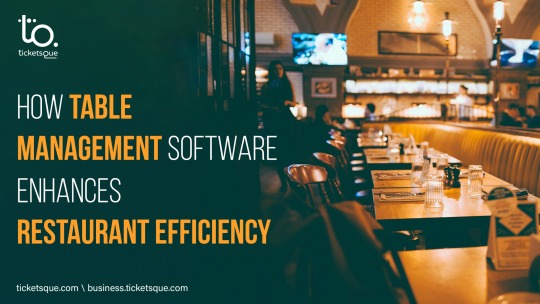
In the fast-paced restaurant industry, operational efficiency is key to providing excellent customer service and maximizing revenue. One of the most effective ways to streamline operations is by implementing a table management software like TicketsQue. This innovative technology optimizes seating arrangements, reduces wait times, and enhances overall guest satisfaction.
1. Optimized Seating and Turnover Management
Managing tables manually can lead to inefficiencies such as double bookings, long wait times, and poor table utilization. With TicketsQue’s table management software, restaurants can efficiently assign tables, track occupancy, and estimate dining durations. This leads to faster table turnovers, maximizing revenue potential while ensuring a smooth flow of guests.
2. Reduced Wait Times with Smart Reservations
Long wait times can deter customers and impact a restaurant’s reputation. TicketsQue’s digital table reservation system allows diners to book tables online, reducing congestion at peak hours. Real-time availability updates ensure that walk-in guests are accommodated efficiently without overbooking issues.
3. Enhanced Customer Experience
A well-managed seating system enhances customer satisfaction. TicketsQue’s software provides real-time updates to guests about their wait times, sends automated confirmations, and even allows restaurants to personalize dining experiences based on guest preferences. Happy customers are more likely to leave positive reviews and return for future visits.
4. Seamless Integration with POS and CRM Systems
TicketsQue’s table management system seamlessly integrates with POS systems and customer relationship management (CRM) tools, providing restaurants with valuable insights into customer behavior, popular dining hours, and table utilization trends. This data-driven approach helps in strategic planning and optimizing staff allocation.
5. Efficient Staff Coordination
Managing a restaurant involves synchronizing multiple operations, including table assignments, order processing, and server availability. With TicketsQue’s software, restaurant managers can assign tables to servers based on real-time data, reducing confusion and ensuring efficient service.
6. Maximized Revenue with Better Space Utilization
Poor table management often leads to wasted seating space. TicketsQue optimizes floor plans and ensures every seat is utilized efficiently, boosting revenue by accommodating more guests without compromising comfort.
7. Data-Driven Decision Making
With built-in analytics and reporting features, TicketsQue helps restaurant owners monitor peak hours, average dining time, and guest preferences. These insights enable restaurants to adjust their operations for better efficiency and profitability.
Conclusion
Implementing TicketsQue’s table management software is a game-changer for restaurants aiming to enhance efficiency, boost revenue, and improve customer satisfaction. With features like optimized seating, seamless POS integration, and real-time updates, restaurants can stay ahead in the competitive hospitality industry.
Upgrade your restaurant’s efficiency with TicketsQue’s advanced table management solution today!
#event tickets#event ticketing software#online ticketing system#event management platform#all-in-one event management platform#trending events in Bangalore#best event management platforms#best pubs in Bengaluru#top events in Bengaluru#online ticketing software#ticketing tools software#event ticketing platforms#free event ticketing system#ticketing platforms#online event ticketing system#digital ticketing solutions#best event ticketing software#best online ticketing system#ticketing system#event booking platforms#booking software for events#table reservation system#restaurant table booking software#event business management software#corporate event software
0 notes
Text
Step into the hidden control room of modern amusement parks! Discover how smart ticketing software is the unsung hero maximizing both screams and revenue. Data is the new rollercoaster designer, from predicting the perfect time for a price drop to crafting personalized thrill packages. Learn how parks are slashing wait times, boosting loyalty, and creating experiences as unique as each visitor – all powered by clever algorithms and digital insights. If you are an amusement park owner striving to put yourself a step ahead of your competitors, don't miss this.
#amusement park#tixera#software#ticketing software#park management software#most popular#business#theme park#water park
0 notes
Text
Why Your Company Needs a Project Management CRM Right Now!
Nowadays, business speed is a critical factor that defines success, and accuracy is of great importance. With the complexity of more and more challenges and the diversification of teams, stakes in terms of tools are higher than ever. Enter Project Management CRM – a powerful solution that merges the best of both worlds: Customer relationship management and project management. This brilliant pair can help your company to reinvent itself and become more effective.
Project Management Customer Relationship Management is a system that addresses customers’ needs. It is another system that enhances project management and customer relationship management as a single solution.
By so doing, project and task management, resource scheduling, and customer relationship management will be easily handled within the system. As you consolidate this crucial information, you are in a good position to monitor all aspects of your business.
The Advantages of Project Management CRM for the Companies
Enhanced Collaboration and Communication: Encourage cooperation and cross functional work. By compiling all the information about a particular project in one program, the members of a group will be able to solve any problem quickly and avoid miscommunication.
Streamlined Workflows: Improve your procedure. This CRM need not be done manually; it helps save time by itself handling repetitive tasks, assigning tasks and tracking them to make sure that they are on track and will meet their deadlines.
Improved Resource Management: Optimize its efficiency. With statistical updates of available resources and workloads, you can effectively manage who is assigned what job and avoid overloading certain people, thus increasing resource utilisation.
Boosted Customer Satisfaction: Please your customers. Adhere to the records of communication and the progression of projects, and be consistent with what has been communicated to the customer. This results in happier customers and better relationships in the long run as a result.
Data-Centric Decision Making: Control your decisions. Take advantage of data and analytics to obtain more insights on the performance rate of the projects, efficiency of resources, and customer patterns. This information should be used in formulating strategies with the intention of enhancing operations and results.
Cost Efficiency: Reduce expenses and increase profits. Simplify work processes, automate some operations, and effectively manage resources to dramatically lower costs.
Scalability: Grow with confidence. Project management CRM solutions are developed to grow with your organization in a way that means growth in the number of projects, clients or team members does not have to negatively affect functionality.
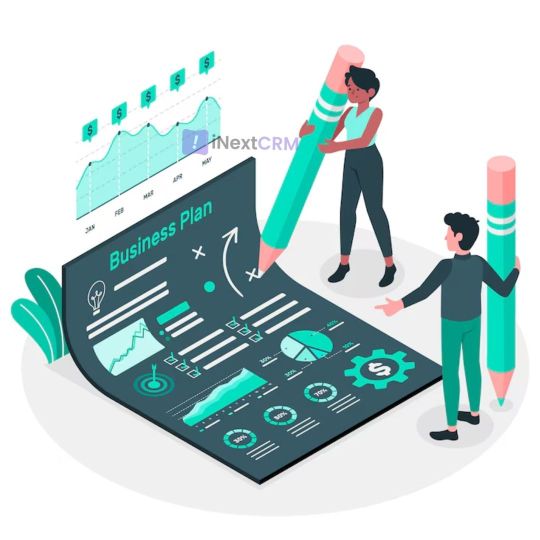
The Roles Played by Project Management CRM
Centralized Information: One-stop Access of all classes and documents. Save all the documents related to each project or information concerning the customer in a single location to minimize time spent on searching.
Automated Processes: Works in less time and with fewer mistakes. Remove the mundane actions such as assigning tasks and checking on the progress and status of each task and execute them through the system.
Better Time Management: Sustain the calendar of deadlines. Have an idea of when projects are due or what the active projects are at any specific time so as to manage time well enough to deliver projects on time.
Enhanced Reporting: They make decisions based entirely on data. Ensure that tools have comprehensive reporting capabilities to monitor project success, resource consumption and customer relations.
Deeper Customer Insights: In a nutshell, getting to know your customers better. Record the behaviour and communications of customers in order to be able to accumulate significant data to help with increasing customer satisfaction and retention.
Conclusion
In today’s competitive business environment, a Project Management CRM is not something which can be considered as a luxury. When advanced through an integrated system, this results in simplification and increased efficiency of daily activities, better communication between departments, increased customer satisfaction and overall business success.
Entities like iNextCRM provide reliable Project Management CRM solutions that may be customized in accordance with the specifics of a given company. Do not hesitate – bring the best out of your business with a Project Management CRM now. Resource: https://inextcrm1.blogspot.com/2024/07/Why-Your%20-Company-Needs-a-Project-Management-CRM-Right-Now.html
#announcement management#task management software#ticket management system#lead management software for small business
0 notes
Text
Future trends in ferry ticketing: Contactless payments and mobile tickets.
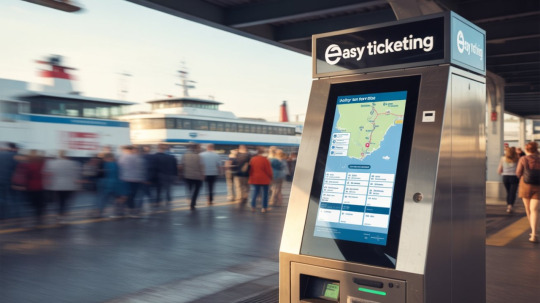
The transportation industry is undergoing a technological revolution, and ferry services are no exception. As customer expectations evolve and digital transformation becomes imperative, ferry operators are increasingly embracing modernization in their ticketing systems. The shift towards contactless payments and mobile ticketing is not just about convenience—it is about improving operational efficiency, safety, and the overall passenger experience. In a post-pandemic world where hygiene and speed are more critical than ever, these digital solutions are becoming the cornerstone of modern ferry operations.
The Rise of Contactless Payments in Ferry Services
Contactless payment technology has become a game-changer in the ferry industry. No longer reliant on paper tickets and cash transactions, ferry services are increasingly integrating tap-and-go solutions that streamline boarding and improve efficiency.
Technology Behind Contactless Payments
The backbone of contactless payment systems lies in technologies such as Near Field Communication (NFC), Radio Frequency Identification (RFID), and mobile wallets like Apple Pay, Google Wallet, and Samsung Pay. NFC allows secure transactions between two electronic devices within close proximity. RFID enables automatic identification and tracking through tags embedded in smart cards or devices. These technologies offer reliable, quick, and secure methods for processing payments, ensuring minimal contact and maximum convenience.
Benefits for Passengers and Operators
For passengers, contactless payments translate into faster check-ins, reduced queuing times, and a smoother boarding process. These systems reduce the friction often associated with traditional ticketing, allowing travelers to use bank cards or mobile phones without the need for cash or physical tickets. For operators, the benefits include improved transaction speed, better data collection for passenger analytics, reduced overhead from cash handling, and enhanced security against theft and fraud.
Challenges and Solutions in Implementation
While the adoption of contactless systems presents numerous benefits, implementation is not without its hurdles. Technical challenges include upgrading existing infrastructure, ensuring compatibility across devices, and maintaining data security. Infrastructural issues often involve retrofitting older vessels or terminals to support modern systems. User adoption can also be slow, particularly among less tech-savvy demographics.
Solutions include phased implementation strategies, comprehensive staff training, public awareness campaigns, and user-friendly interfaces that simplify the transition. Moreover, government subsidies and public-private partnerships can assist in covering the initial investment costs, ensuring a smooth modernization journey.
Mobile Ticketing and Its Impact on Ferry Travel
The rise of smartphones has led to a surge in mobile ticketing, allowing passengers to purchase, store, and use tickets directly from their devices. This shift enhances the travel experience and aligns with global trends in digital transformation.
Features of Modern Mobile Ticketing Apps
Modern mobile ticketing applications offer a suite of features designed to simplify travel. These include:
Ticket purchase and payment integration
Real-time service updates and alerts
QR code or barcode scanning for ticket validation
Digital storage and history of past trips
Multi-modal transport integration, allowing a single app to manage buses, trains, and ferries
These functionalities make mobile ticketing more than a transactional tool—it becomes a comprehensive travel companion.
Enhanced Customer Experience Through Mobile Tickets
Mobile ticketing enhances accessibility and convenience. Travelers no longer need to queue at ticket counters or worry about losing paper tickets. The ability to book and manage trips on-the-go ensures a seamless experience, especially for commuters and tourists. Additionally, digital platforms often support multiple languages, making them accessible to international passengers.
Security Measures in Mobile Ticketing
Security remains a top priority. Modern mobile ticketing platforms use end-to-end encryption, two-factor authentication (2FA), and biometric verification to protect user data and transactions. These measures mitigate risks such as fraud, unauthorized access, and data breaches, building trust among users and ensuring compliance with data protection regulations.
Integration of Contactless and Mobile Ticketing with Smart Ferry Ecosystems
As ferry systems become more digitally connected, contactless and mobile ticketing are integrating into broader smart transportation ecosystems that leverage IoT, cloud computing, and big data.

Role of Data Analytics in Optimizing Ticketing and Operations
Digital ticketing Kiosk systems generate vast amounts of data that can be analyzed to improve operations. Passenger flow patterns, peak travel times, and route popularity can inform scheduling, staffing, and capacity planning. This data-driven approach enhances service reliability, reduces operational costs, and improves customer satisfaction.
Interoperability with Other Transport Modes
Seamless travel requires interoperability between different modes of transportation. Integrated ticketing systems allow passengers to use a single platform or smart card across buses, trains, and ferries. This unified experience encourages the use of public transport and supports city-wide mobility plans.
Environmental and Economic Impacts of Digital Ferry Ticketing
Digital ticketing systems are not only convenient and efficient—they are also environmentally sustainable and economically advantageous.
Reducing Carbon Footprint through Paperless Ticketing
By eliminating paper tickets, ferry operators contribute to reducing deforestation, energy consumption, and waste. Digital systems also reduce the need for physical infrastructure such as ticket booths and printing equipment, leading to a smaller carbon footprint and supporting broader environmental goals.
Cost Efficiency for Ferry Operators
Digital ticketing minimizes expenses associated with paper, ink, labor, and error correction. Automated systems reduce reliance on manual processing, leading to fewer human errors and lower operational costs. Additionally, real-time analytics allow for dynamic resource allocation, further boosting efficiency.
Future Outlook: Innovations Shaping Ferry Ticketing
The future of ferry ticketing is being shaped by advanced technologies that promise even greater security, efficiency, and personalization.
Biometric Authentication and AI Integration
Biometric systems such as facial recognition and fingerprint scanning are being explored for ticket validation. These technologies offer a frictionless experience while enhancing security. AI is also being used to analyze passenger behavior, predict demand, and personalize services.
Blockchain for Ticketing Transparency and Security
Blockchain technology can revolutionize ticketing by creating tamper-proof, transparent, and decentralized records. This can prevent issues such as ticket fraud, duplication, and resale. Smart contracts can automate refunds and enforce terms of service, ensuring fairness and trust.
Personalization and Dynamic Pricing Models
AI-powered platforms can offer tailored ticketing options based on travel history, preferences, and demand patterns. Dynamic pricing models, similar to those used in airlines, can optimize revenue while offering value to passengers through real-time discounts and peak/off-peak pricing.
Conclusion
The modernization of ferry ticketing systems through contactless payments and mobile technology represents a transformative shift in maritime transportation. These innovations enhance the passenger experience, improve operational efficiency, and support sustainable practices. As ferry operators continue to integrate these solutions with smart technologies and data analytics, the industry is poised for a future of seamless, secure, and personalized travel. Embracing these advancements today ensures that ferry services remain competitive, resilient, and aligned with the expectations of tomorrow's travelers.
#ticketing#ticketing kiosk#timemanagement#kiosk#technology#trends#viral#software#selfservice#software development#business#tech trends#tech innovation#web development#programing#futurestic#future technology
1 note
·
View note
Text
#eventmanagement#virtualevents#event booking software#online event software#virtual event platform#event ticket management software#online event ticketing#advertising#business
0 notes
Text
Elevating Excellence: Why the Transportation and Logistics Industry Should Prioritize Enhanced Customer Service
In the fast-paced and competitive realm of transportation and logistics, the emphasis on enhanced customer service is becoming increasingly vital. This blog post delves into the reasons why the transportation and logistics industry should prioritize customer service, exploring how it can lead to increased customer satisfaction, improved operational efficiency, and a strengthened market position.
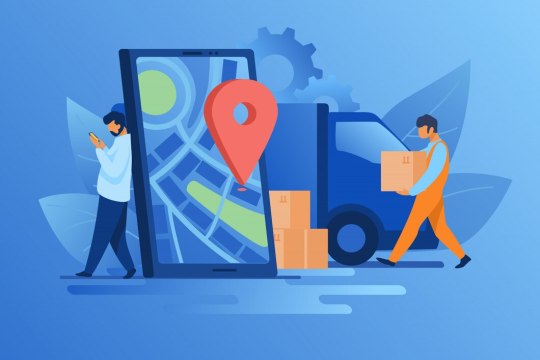
Transportation Customer Service:
Transportation customer service underscores the unique challenges and opportunities within the transportation sector. Acknowledging the specific needs of customers in the logistics chain is crucial for building lasting relationships and ensuring a positive overall experience.
Customer Support Management:
The customer support management highlights the strategic approach required to deliver exceptional customer service. Effective management of customer support processes, from order inquiries to issue resolution, is instrumental in meeting and exceeding customer expectations.
Multilingual Customer Support:
In an increasingly globalized world, the term Multilingual customer support becomes pivotal. Offering customer support in multiple languages is not just a convenience; it is a necessity in a diverse and interconnected marketplace. Multilingual customer support enhances accessibility, fosters international collaboration, and demonstrates a commitment to meeting the unique needs of a global customer base.
Reasons to Prioritize Enhanced Customer Service:
Customer Satisfaction: A focus on enhanced customer service directly correlates with increased customer satisfaction. By providing prompt and accurate information, addressing concerns proactively, and ensuring a seamless experience, businesses build trust and loyalty among their clientele.
Operational Efficiency: Streamlining customer support management contributes to operational efficiency. Resolving issues promptly, minimizing order discrepancies, and optimizing communication channels lead to smoother logistics operations and reduced disruptions.
Competitive Edge: In an industry where competition is fierce, superior customer service becomes a key differentiator. Companies that prioritize customer satisfaction gain a competitive edge, attracting and retaining clients in a market where service quality often defines success.
Brand Reputation: Customer service plays a crucial role in shaping a brand's reputation. Positive interactions with customers contribute to a positive brand image, while subpar customer service can lead to reputational damage. A strong brand reputation, built on excellent customer service, enhances market credibility and trust.
Conclusion: In conclusion, prioritizing enhanced customer service in the transportation and logistics industry is not just a matter of meeting expectations; it is a strategic imperative. From transportation customer service tailored to the unique needs of the industry to effective customer support management and multilingual support for a global clientele, the benefits are manifold. By placing customer satisfaction at the forefront, businesses in the transportation and logistics sector can navigate challenges, foster growth, and secure a prominent position in an ever-evolving and competitive marketplace. In a world where customer-centricity is paramount, elevating customer service becomes a pathway to sustained success and industry leadership.
#Transportation customer service#customer support management#Multilingual customer support#Trucking Dispatch Companies#Bpo services#Support center#Support ticket system#Live chat support#Online support#Customer support software#Healthcare bpo#Healthcare business process outsourcing#load board outsourcing#end to end supply chain#Data entry outsourcing#Business process outsourcing companies#Customer support outsourcing#claim managament#Bpo solutions#Customer support solutions#Customer support chat#supply chain outsourcing#Back office outsourcing#Customer support team#back office outsourcing services#carrier onboarding#logistics control tower#Offshore bpo#transporation customer service#Customer support ticket
0 notes
Text
I had a straight up delightful moment at work yesterday when a new member of the management team asked me how we were tracking warranties and I explained that we kind of aren't and he asked why we aren't and that meant he got a 30-minute rundown of how top-to-bottom fucked the procurement process is here.
First I explained the process for sending a quote (i am assigned a ticket in system A1, I create an opportunity in system A2, from the opportunity i can generate a quote in system B - if I start with the quote I can't associate it back to the opportunity or the ticket, if we need to change the quote after it was approved we need to generate a new quote from the opportunity to overwrite the old one - and send the quote from system B.)
Then I explained the process of getting approval (system B sends the quote and receives the approvals but does not communicate that to system A, so until it is manually updated system A sends a daily reminder about the quote to the client and after three days with no response will close the ticket even if the client approved the quote in system B. System B will send an email if a quote is approved but it comes from our generic support email so to make sure that I don't miss approvals I have filtering rules set up and a folder I check twice a day. Because there are 4 people who use this system I also check twice daily in system B to see if anyone else's quotes were approved).
Then I explained how I place the orders (easy! I'm a pro! We have a standardized PO pattern that tracks date, vendor and client, it's handy)
Then I explained how I document the orders (neither system A nor B has a way of storing information about orders in progress, only orders that are complete; as such I have created a PO Documentation spreadsheet that lists the PO number, vendor, line of business, client, items ordered, order total, order date, ETA, tracking numbers, serial numbers, delivery confirmation, ticket number for install, ticket title for install, shippong cost, and close confirmation, which all have to be entered individually and which require a minimum of three visits to the spreadsheet per order: entering initial info, entering tracking and SN info, then once more to get that info to close the opportunity)
Then I explained how we close an order (confirm hardware delivery or activate software, use system A2 to code hardware/software/non-taxable products appropriately, run wizard to add charges from A2 to ticket in A1; because the A2 charges were locked by approval in system B, use system A3 to add shipping or other fees or to remove any parts that were approved but not actually needed or ordered - THIS WEEK I got permission to do this bit on my initial A1 procurement ticket instead of generating an A1 post-procurement ticket for fees and shipping. Once all of that is done it's moved into system A4 and is no longer my problem).
If there is a warranty involved it *should* automatically have the expiration tracked in system C, but system C doesn't have any way to pull order info so there's no way it can track warranty *start* dates without somebody manually entering it or without using API data from the manufacturer, which some manufacturers don't provide (fuck you, Apple).
But me and my trainee are happy to add the start date to the configuration once a tech tells us that the device is enrolled in system C. If the techs will tell us that we can add that info no problem.
Until then, I have unfortunately been forced to start a spreadsheet.
The manager was appalled, it was great. I got to say the words "part of the reason things sometimes fall through the cracks is because we have so many cracks" and his response was "no shit." I'm talking to vendors about a procurement system now :) :) :) :)
580 notes
·
View notes